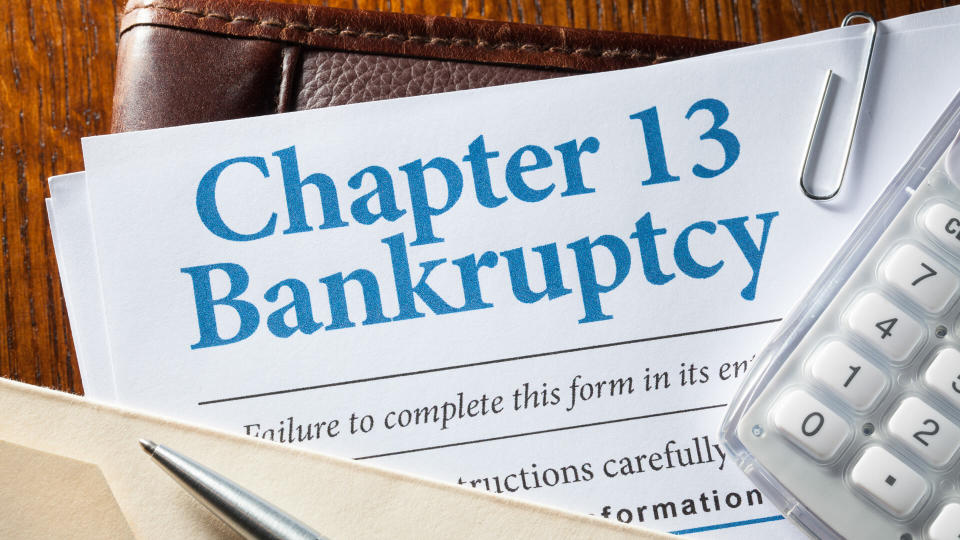6 Ways To Rebuild Your Credit After Filing For Bankruptcy

When struggling borrowers can no longer pay their creditors and they’ve expended all available options, the courts may allow them to reorganize their debts and protect some of their assets through Chapter 7 or Chapter 13 bankruptcy.
The process can offer bittersweet relief, but it can also tank your credit score by hundreds of points and stay on your record for a decade, according to the United States Bankruptcy Court.
Those years represent your rebuilding phase — but how can someone recover from such a devastating financial blow?
The following is a primer on how to rebuild your credit based on tutorials for post-bankruptcy credit repair from those who know best — the three credit reporting agencies, TransUnion, Equifax and Experian.
Also here are some common myths about bankruptcy.
Find Out: How To Eliminate $100,000 of Debt
Be Aware: 6 Unusual Ways To Make Extra Money (That Actually Work)
Wealthy people know the best money secrets. Learn how to copy them.
Pull Your Credit Report and Check Your Score
Step one after filing for bankruptcy is to take inventory of the wreckage and find out where you stand so you can begin rebuilding. Since information can vary from one bureau to another, it’s vital to pull reports from all three agencies. You can pull fresh copies of all three reports for free once per week at AnnualCreditReport.com.
Check both your VantageScore 3.0 — the three bureaus’ scoring model — and your more widely used FICO score, which The Fair Isaac Corporation first introduced in 1989, to see how much damage the bankruptcy caused.
Read More: How Much Does the Average Middle-Class Person Have in Savings?
Scour For Errors and Challenge Any Mistakes
Closely examine all three reports to make sure that all the accounts discharged in bankruptcy are listed as “closed.” If they’re not, your credit score could be suffering unnecessarily. Contact your lenders or creditors and ask them to update your status regarding unclosed accounts or any other error you find, no matter how minimal. If all else fails, you can file a dispute for free with the corresponding credit reporting agency.
Tap the Brakes On Charging and Never Miss a Payment
Your updated scores will probably reveal that applying for new credit is not in your near future, but if you have any open accounts, don’t close them. Instead, use them delicately to tally up all important, on-time payments — payment history accounts for 35% of your FICO score — but keep your balances low to show lenders as much available credit as possible. Amounts owed is the second biggest factor, making up another 30% of your score, according to MyFICO.com.
Apply For a Secured Card
If you don’t have any open accounts, you’ll find yourself mired in the classic credit catch-22 — you need accounts to establish good credit, but you need good credit to open accounts.
A simple solution lies in secured cards, which require cash deposits that serve as the cardholder’s “credit limit.” Since the issuer risks nothing, they’re usually open even to the least qualified applicants.
The difference between a secured card and a debit card is that the issuer reports your on-time payments to the credit bureaus — a crucial component of rebuilding credit.
Ask Someone To Take You on as an Authorized User
If you can’t get a secured card or even if you can, you can boost your score even more by becoming an authorized user on someone else’s account. Since the primary cardholder is ultimately on the hook for any charges you rack up, it’s a trust-based arrangement — and if you can find someone willing to extend you that trust, you’d be wise not to violate it.
According to Experian, “Once they add you, the full history of the account will be added to your credit reports, which can have an immediate positive impact on your credit score.”
Consider a Credit Builder Loan
The bureaus also recommend looking into so-called credit builder loans.
According to CNBC, these specialty loans come with fixed monthly payments, the same as personal loans and car loans. But unlike traditional borrowing, credit builder loans don’t give you the money upfront under the promise of repayment. Instead, the lender deposits your money — usually $300 to $1,000 — into a savings account or CD that you can’t access until you’ve made all your agreed-upon monthly payments. The terms last at least six months, since that’s the minimum period an account must be open to register a credit score.
More From GOBankingRates
In Less Than a Decade, You Won't Be Able To Afford Homes in These 20 Arizona ZIP Codes
These 10 Used Cars Will Last Longer Than an Average New Vehicle
This article originally appeared on GOBankingRates.com: 6 Ways To Rebuild Your Credit After Filing For Bankruptcy

 Yahoo Finance
Yahoo Finance 